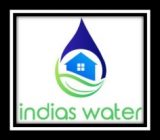The extreme water shortage in major Indian cities, particularly Chennai, has brought public attention back to the issue of India’s water scarcity. Though experts, environmentalists, and NGOs had been crying out loud about India’s impending water crisis for a long time, they failed to garner public attention until the taps went dry in big cities.
India Suffering Worst Water Crisis
Source: BloombergQuint
Save water, save life
Source : Kristian Babic
Water connects every aspect of life. Water is the normal part of daily life for everyone, everywhere but now-a-days they are not. Access to safe water and sanitation can quickly turn problems into potential – empowering people with time for school and work, and contributing to improved health for women, children, and families around the world. Over 2 billion people around the world don’t have access to safe water. While India’s economy continues to grow rapidly, hundreds of millions of people across the country still live in poverty, malnutrition, unhygienic living conditions, and without access to clean drinking water.
In order to address India’s water problems. It is important to understand that the roots of the current water crisis do not lie in a deficient or delayed monsoon as is being made out by the Indian media. In fact, it is years of government neglect, wrong incentives and outright misuse of the country’s water resources which has led to the current crisis. It is this overexploitation of groundwater resources, more so, in the north-western part of the country which is one of the main reasons for India’s water crisis
According to the NITI Aayog report, The Consequences of Water Crisis are:
- More than 600 million people are facing severe water shortages nationwide
- 75% of households do not have drinking water on premise. 84% rural households do not have piped water access. 70% of our water is contaminated; India is currently ranked 120 among 122 countries in the water quality index.
- On an average nearly 200,000 Indian lives are lost every year due to inadequate supply or contamination of water.
- India is the world’s biggest groundwater extractor. It forecasts that 21 cities, including Delhi, Bengaluru, Chennai and Hyderabad, will run out of groundwater by 2020; also, 40% of our citizens will have no access to drinking water by 2030.
- By 2030, estimates indicate that India’s water demand will exceed supply by a factor of two.
- This will be implying severe water scarcity for hundreds of millions and an eventual loss of around 6% of the country’s GDP by 2050.
- Inter-State disputes over the water issue has been raising.
- According to the NITI Aayog database, 54% of wells in India are declining in level due to unsustainable withdrawals for irrigation.
Data Source: Composite Water Management Index, NITI Aayog.
